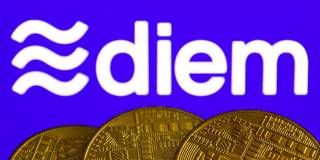An obscure corner of the digital sphere that was poorly understood two years ago is now subject to increasingly intense scrutiny by central bankers, regulators, and investors. Unfortunately, more intense scrutiny has not necessarily meant better understanding.
BERKELEY – The debate over stablecoins has come a long way since Facebook announced the creation of Libra (now rebranded Diem) almost exactly two years ago. An obscure corner of the digital sphere that was poorly understood then is now subject to increasingly intense scrutiny by central bankers, regulators, and investors. The stakes, including for financial stability, are high. Market capitalization, or circulating supply, of the four leading US dollar stablecoins alone exceeds $100 billion.
But more intense scrutiny does not mean better understanding. Start with the belief that stablecoins are intrinsically stable because they are “fully collateralized.” The question, of course, is: collateralized by what?
Naive investors in dollar-linked coins assume that the collateral takes the form of dollars held in federally insured US banks or their close equivalent. But that is only partly correct. After being criticized for its opacity, the leading stablecoin issuer, Tether Limited, recently revealed that it held barely a quarter of its reserves in cash, bank accounts, and government securities, while holding nearly half in commercial paper and another tenth in corporate bonds. The second leading stablecoin by capitalization, USD Coin, says only that it holds its reserves in insured US depository institutions and other “approved investments.” Whatever that means.

BERKELEY – The debate over stablecoins has come a long way since Facebook announced the creation of Libra (now rebranded Diem) almost exactly two years ago. An obscure corner of the digital sphere that was poorly understood then is now subject to increasingly intense scrutiny by central bankers, regulators, and investors. The stakes, including for financial stability, are high. Market capitalization, or circulating supply, of the four leading US dollar stablecoins alone exceeds $100 billion.
But more intense scrutiny does not mean better understanding. Start with the belief that stablecoins are intrinsically stable because they are “fully collateralized.” The question, of course, is: collateralized by what?
Naive investors in dollar-linked coins assume that the collateral takes the form of dollars held in federally insured US banks or their close equivalent. But that is only partly correct. After being criticized for its opacity, the leading stablecoin issuer, Tether Limited, recently revealed that it held barely a quarter of its reserves in cash, bank accounts, and government securities, while holding nearly half in commercial paper and another tenth in corporate bonds. The second leading stablecoin by capitalization, USD Coin, says only that it holds its reserves in insured US depository institutions and other “approved investments.” Whatever that means.